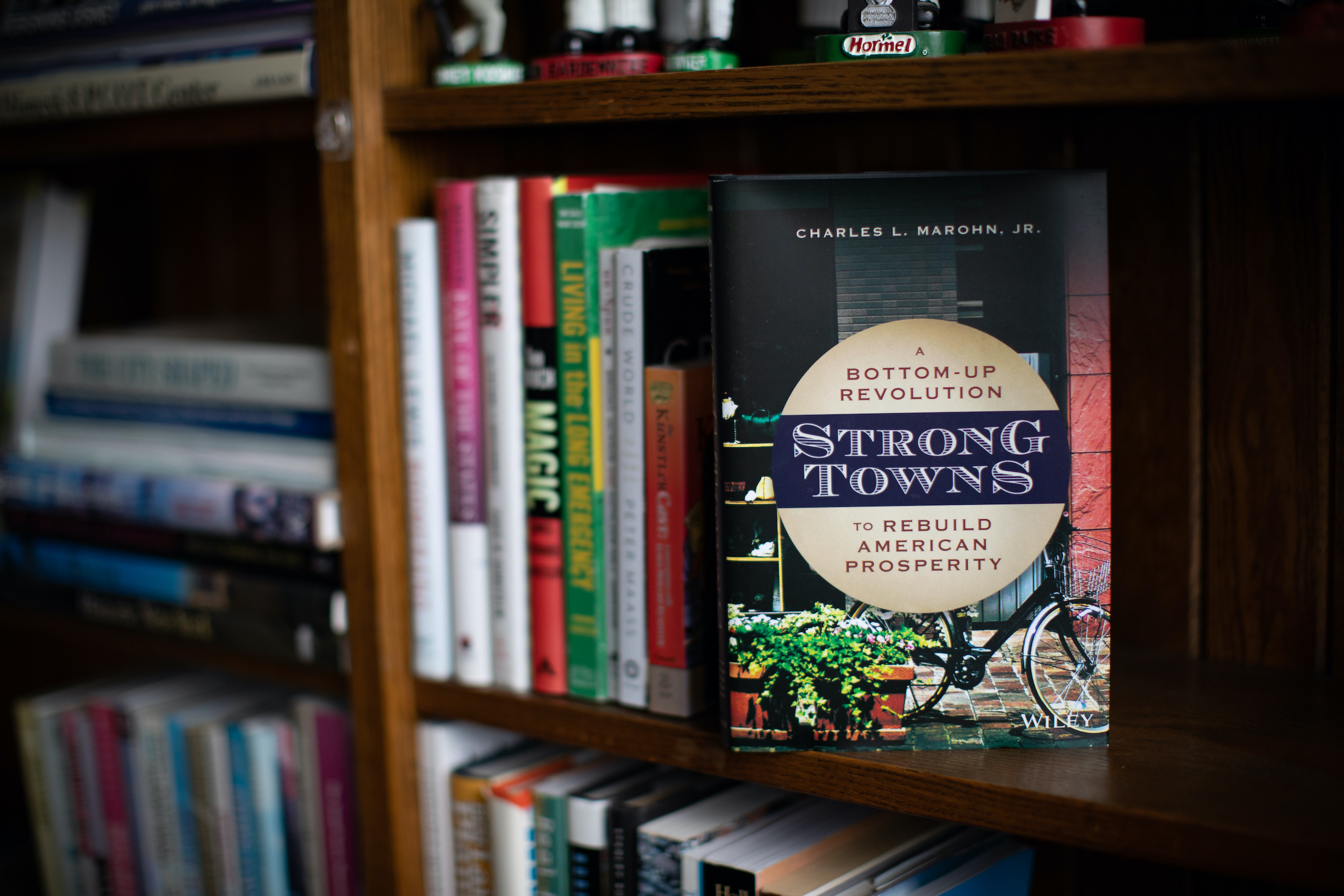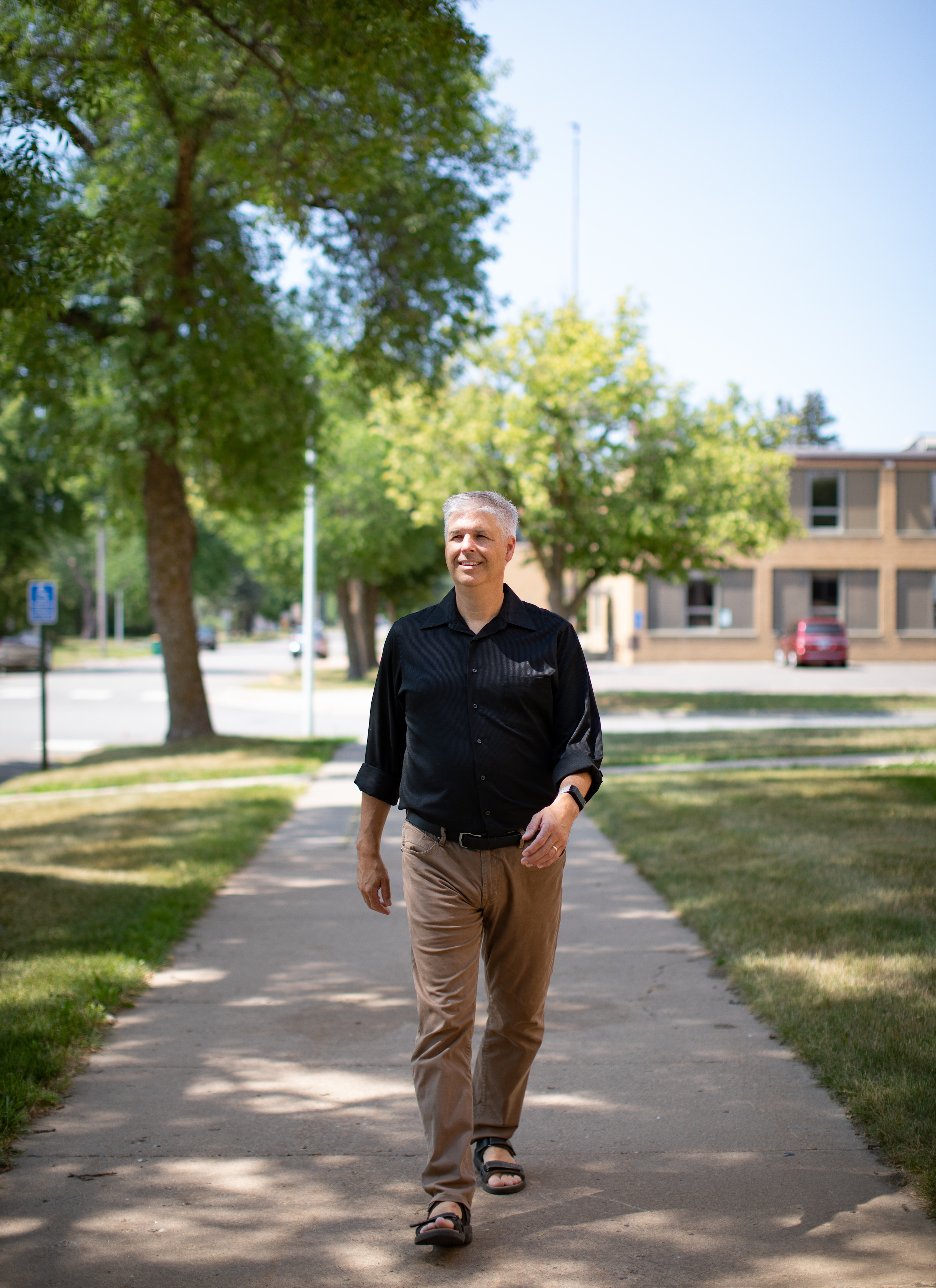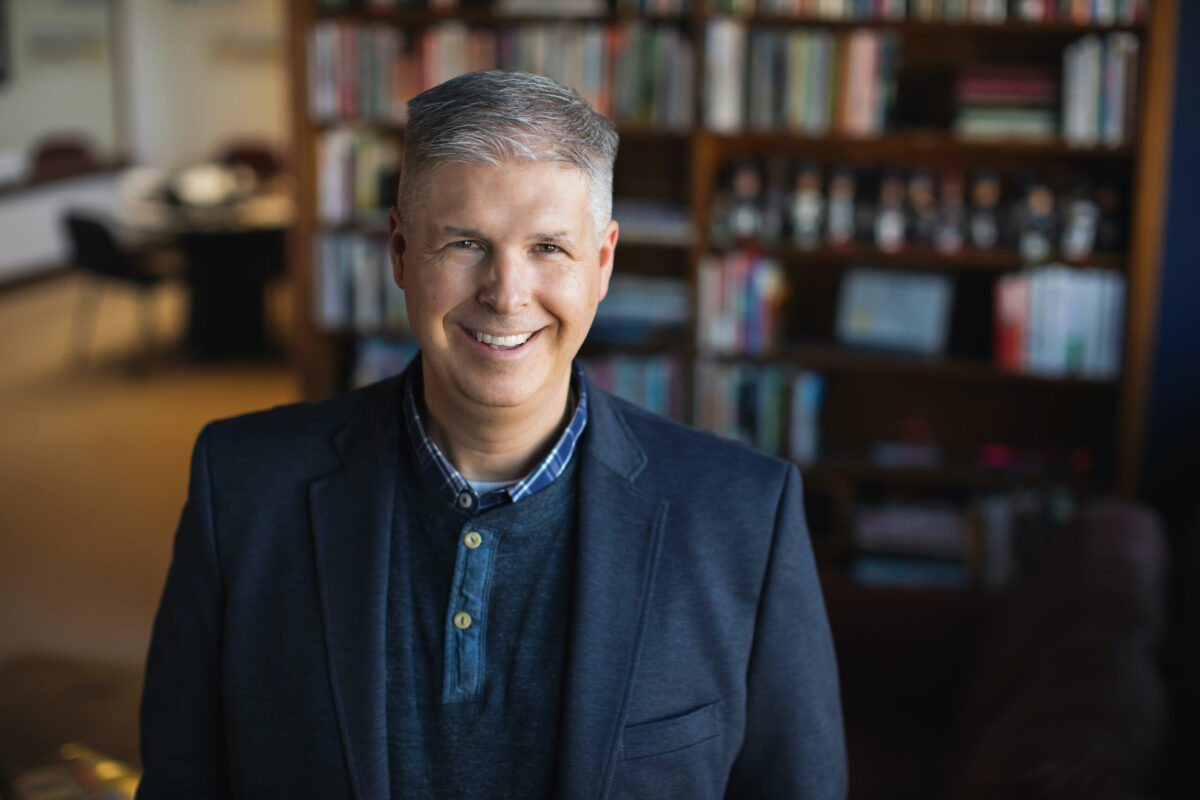Walking six blocks to work each morning gives Charles Marohn a unique insight into the vitality of his town, and into his own well-being. Aware of the benefits of exercise in his life, he quickly draws an analogy between personal discipline and the discipline that makes for a strong town. Wisdom literature often draws a comparison when it calls the human body one’s temple or place of habitation, cautioning us to make good choices in the care thereof. Marohn sees the same discipline necessary for personal health as being necessary for our communities—the shared places of our habitation. In a recent conversation, we talked a bit about his faith. He’s a practicing Catholic who values the discipline of self-denial. “Fasting is an intentional deprivation that actually makes your body work better—a lot like exercise,” he said.
As the founder of Strong Towns, Marohn is on a mission to help communities of all sizes gain the discipline that will give them the strength and resiliency to not only survive challenges but also to use them as catalysts to grow and prosper. Surveying his town as he walks, Marohn sees the human struggle as well as the opportunities. Little things—the trees planted, the fresh paint, a hand-painted crosswalk, the cleaned-up empty lot; these are the signs of a healthy community. Thousands of individuals, each of them adding a small piece to the fabric of the whole, together cause a community to grow and prosper.
And Marohn has been forced to search for these components that make communities strong. He grew up on a small farm in Baxter, Minnesota, studied civil engineering at the University of Minnesota, and received a master’s degree in planning. “An engineer sees everything in equations,” he says. Working for the small town of Remer, Minnesota, Marohn set out to obtain funding for a small sewer system repair. Government agencies couldn’t be bothered with his small grant request, so Marohn got creative, turning a $300,000 repair into a $2.5-million sewer expansion project. He was a hero—or was he? Even with grants and sweet loan deals, the project actually failed to generate enough revenue to cover repaying the loans. So Marohn began to see the bigger picture.
His latest book, “Confessions of a Recovering Engineer,” is scheduled for release in the fall of 2021. In it, he questions the planning and procurement mentality that favors building bigger instead of using a more organic and locally empowered process. His critics love to call him “anti-growth” or “anti-suburbs,” but in really dialoguing with him, one finds a man with a truly positive vision for the places of our habitation—and he’s a visionary with a keen sense of history.
History and Planning
Marohn’s hometown of Brainerd, Minnesota, began as a collection of hastily constructed wooden buildings along a simple main street. Following a pattern they had seen before, they used local lumber, milled and planed, to develop a street—Front Street. “This is how every city in human history up to this point had begun: a series of pop-up shacks, some hopes, and some dreams. The great cities of North America—San Francisco, Chicago, Houston, and Manhattan—all began in this way. London, Paris, Milan, and the cities of Europe, likewise. Even ancient cities, where urban DNA was in a more infantile phase—places like Alexandria, Thebes, Beirut, and Damascus—were founded in this same manner.” Was it a smooth process? Not exactly, as there was chaos and failure along the way, too. But as the town grew, the mistakes could give way to other uses.
A town would grow incrementally and organically, evolving slowly as its inhabitants continually sought to meet their needs and express their dreams. Its fine school, its Beaux-Arts courthouse, and the presence they both conveyed—none of these came first; rather, they emerged gradually as the process unfolded. They were more often than not a second or third version of the same edifice—often on the very same spot. This process of gradual renewal served us well, and we tend to forget that it came to us, sometimes quite literally, through the fire. Some of our great cities burned to the ground, and lessons learned in disaster informed the rebuilding.

However, sometime during the early to mid-20th century, this natural evolution of towns changed. After the Great Depression and World War II, we felt that we could do a better job by controlling the process from the top down. The United States had emerged from that great conflict relatively unscathed, and we found new prosperity that would allow us to build our environment on a grand scale. Old neighborhoods that had evolved over the years, often home to ethnic communities nurturing their unique cultures, suddenly stood in the way of progress. Flattened to make way for highway interchanges or housing projects, mid-20th-century planners went large when building upon their ruins—and they built their projects all at once.
Whereas entropy and renewal were constant in the old community fabric, a project’s new structures would initially be shiny and pristine, but in no way immune to decay. Also, because they were all constructed at the same time, they would later begin to break down together—and there would be no gradual renewal, only the endless demands of maintenance as they aged. The battle then became an ever-increasing effort to counter the wholesale deterioration of the project. Additionally, novelty and public funding had led cities to underestimate the true cost of maintenance. With abundant sources for project funding, old buildings were left to decay while their occupants simply moved into newer versions across town.
“This idea that there should be some kind of overarching plan that lays it all together gives us a certain degree of comfort—that is really false comfort,” Marohn says. “The postwar development pattern has really forced us into a Sisyphus kind of relationship with the world. Our only struggle now is to resist decline—not to improve, make better, evolve, reach higher states of being and greatness, but to just simply resist the rock falling back down the hill.
“Instead, you need to respect the organic nature of it, the idea that cities do need to evolve and adapt and change and be reborn—cities and neighborhoods need to reinvent themselves regularly. You need to add the capacity to respond to stress and opportunity. If you don’t embrace that, then wherever you are today is the high water mark for everything in the future—and the question is then, ‘How long can you keep from decline?’ Can you put it off for one generation or two generations—10 or 50 years?”
A Change for the Better
“If you look at the way we build places now, the vast majority of them are abandoned, not rejuvenated. Credentialism has led to a lack of experimentation—that stifles innovation,” Marohn says. “The innovator will not necessarily be the smartest person in the room; rather, it will be the result of 1,000 experiments going on simultaneously. Today, we see inventiveness as the realm of people like Elon Musk. And so it goes: The expert will lay out a solution, it will be built, and when it fails to deliver, we’ll do a charrette—we’ll bring in the people and listen to them—and then the expert will pronounce the solution. Jane Jacobs, with no planning experience, saw the value of places like Greenwich Village, and ultimately inspired their renewal. … It is time for a new generation of her ilk to rise up and begin the renewal of their communities from the bottom up. In the end, it really isn’t about new urbanism or suburbs versus city, but a vision for a healthy community—one that lives within its means and allows for its members to contribute to its vitality—much like any healthy family. This is about people more than projects.”

An example of where this is happening today is the Broad Avenue neighborhood in Memphis, Tennessee. Broad Avenue was a wasteland of vacant stores and had become a place to simply “drive through.” Then an army of local citizens equipped with brooms, brushes, and cheap hardware-store paint started a revolution. The citizens painted in crosswalks and bicycle lanes, and earnestly worked to make the streets as clean and inviting as their limited resources would allow. They invited merchants into the vacant stores—and the merchants came. When Memphis city officials realized what was happening (with no permits having been requested), did they step in and shut it down? Marohn points out that they did quite the opposite: “In many cases, where it was appropriate, they came in and replaced the hardware store paint with permanent crosswalks and bicycle lanes. They followed the template laid down by the citizens in most cases. Then they looked at the fact that the area had almost 100 percent occupancy of the commercial spaces, and used it as a model for surrounding streets and communities.”
In his work with Strong Towns, Marohn strives to empower many such communities. While the media shows us the decline of Detroit, he can point to neighborhoods where local initiatives are keeping people in their homes—keeping neighborhoods alive. After the difficulties of the pandemic, Marohn sees real lessons to be learned from citizens joining together to revitalize their communities. Psychologists have similarly documented that Americans were actually happier during the Great Depression of the 1930s; as they worked together to overcome all sorts of real obstacles, they experienced real and lasting personal satisfaction. Hopefully, our communities have emerged from the isolation of the past year with renewed respect for our shared places of human habitation. Most importantly, we should move forward as shapers—not merely consumers—of these places, gaining the deep satisfaction that comes from doing so.
Bob Kirchman is an architectural illustrator who lives in Augusta County, Virginia, with his wife, Pam. He teaches studio art (with a good deal of art history thrown in) to students in the Augusta Christian Educators Homeschool Coop. Kirchman is an avid hiker and loves exploring the hidden wonders of the Blue Ridge Mountains.




